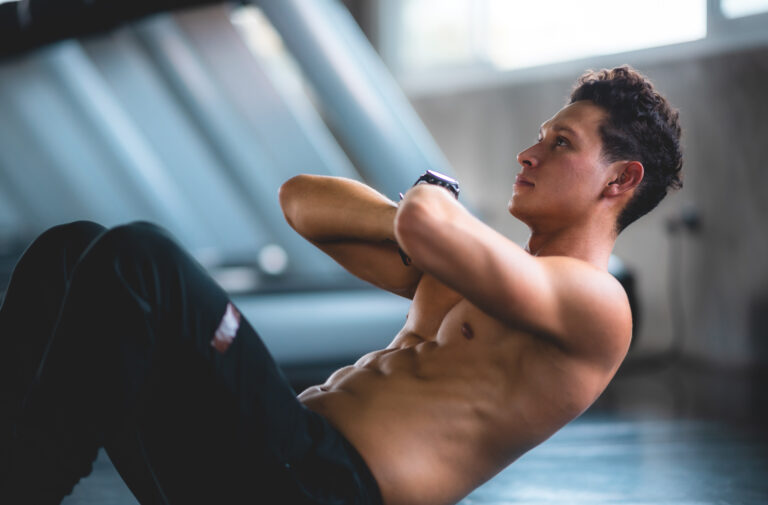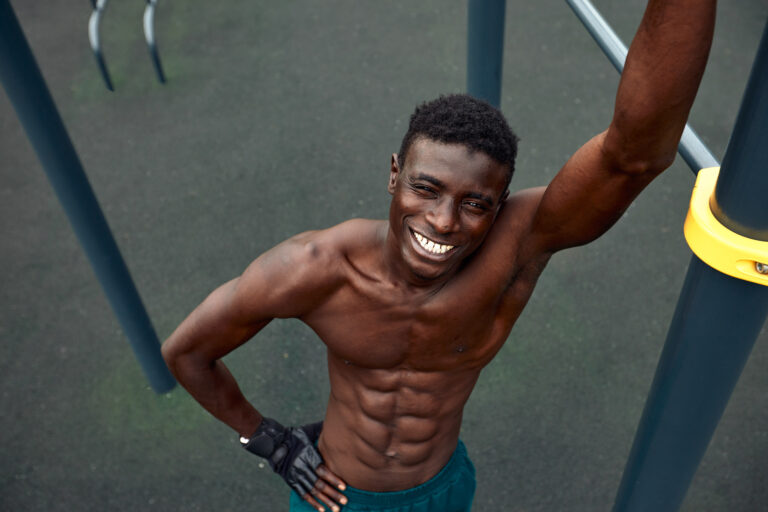What is the Orbicularis Oris?
The orbicularis oris muscle, often referred to as the “kissing muscle,” plays a pivotal role in many essential functions involving the mouth. Its importance extends beyond mere facial expressions; it is integral to speaking, eating, and maintaining overall oral health. Understanding the orbicularis oris muscle’s anatomy and functionality can significantly impact fitness routines, rehabilitation practices, and general well-being.
Anatomical Structure
The orbicularis oris is a complex, multi-layered muscle encircling the mouth, forming the foundation for movements of the lips. Its intricate structure consists of numerous muscle fibers that interlace in a circular pattern, enabling a wide range of movements. Anatomically, the orbicularis oris originates from the maxilla (upper jaw) and mandible (lower jaw) bones and inserts into the skin and mucous membranes of the lips.
This muscle is unique in its composition, as it is not a single muscle but a composite of four quadrants that interact seamlessly. These quadrants include the superior and inferior orbicularis oris, each divided further into deep and superficial layers. The deep layers are responsible for the strength and control of lip movements, while the superficial layers contribute to finer, more nuanced actions.
The orbicularis oris works in conjunction with adjacent muscles, such as the buccinator and zygomaticus muscles, to coordinate facial expressions and movements. The synergy between these muscles allows for the complex actions required for articulation, mastication, and expressions of emotion. This interconnectedness underscores the importance of maintaining the health and functionality of the orbicularis oris.
The vascular supply to the orbicularis oris is provided by the superior and inferior labial arteries, branches of the facial artery. This rich blood supply ensures the muscle receives adequate oxygen and nutrients, vital for its performance and recovery. Innervation is primarily through the facial nerve (cranial nerve VII), which facilitates the precise control needed for its various functions.
Functions
The orbicularis oris is essential for a myriad of facial movements and expressions. Its primary role is to control the movements of the lips, enabling actions such as puckering, compressing, and closing the lips. These movements are crucial for non-verbal communication, such as smiling, frowning, and other expressions that convey emotions.
In speech, the orbicularis oris works in tandem with other facial and oral muscles to articulate sounds. It plays a crucial role in the production of bilabial consonants, like “p,” “b,” and “m,” by bringing the lips together. This muscle’s ability to finely adjust the tension and positioning of the lips is vital for clear and precise speech.
Eating is another fundamental function of the orbicularis oris. It helps in manipulating food within the mouth, assisting in chewing and preparing food for swallowing. By sealing the lips, the orbicularis oris prevents food and liquid from escaping the mouth, ensuring efficient and controlled ingestion.
Beyond these everyday functions, the orbicularis oris contributes to the respiratory process. During inhalation and exhalation, the muscle can influence the shape and opening of the mouth, affecting airflow. This is particularly evident in activities that require controlled breathing, such as playing wind instruments or certain athletic endeavors.
The muscle’s role in maintaining facial aesthetics cannot be overlooked. The tone and strength of the orbicularis oris significantly impact the appearance of the lips and surrounding areas. A well-conditioned orbicularis oris contributes to fuller, more youthful-looking lips, which are often associated with health and vitality.
Development and Changes Over Time
The development of the orbicularis oris begins early in life, with noticeable changes occurring from infancy through adulthood. In newborns, the muscle is relatively underdeveloped but rapidly gains strength and coordination as the child grows. This development is driven by the need for feeding, as infants rely heavily on the orbicularis oris for sucking and swallowing.
During childhood, the muscle continues to mature, influenced by activities such as speaking, eating solid foods, and the increasing complexity of facial expressions. These activities promote the growth and refinement of muscle fibers, enhancing the orbicularis oris’s functional capabilities.
As individuals reach adulthood, the orbicularis oris typically reaches peak functionality. Regular use and engagement in activities that require lip movements help maintain muscle tone and strength. However, various factors can influence the muscle’s health over time, including lifestyle choices, diet, and overall physical activity levels.
Aging introduces several changes to the orbicularis oris. The muscle fibers may gradually lose their elasticity and strength, leading to decreased functionality. This can manifest as difficulties in speech, eating, and facial expressions. Additionally, age-related changes in collagen and elastin in the skin surrounding the lips can affect the muscle’s appearance and performance.
External factors such as smoking, excessive sun exposure, and poor nutrition can accelerate the aging process and negatively impact the orbicularis oris. Maintaining a healthy lifestyle, including a balanced diet rich in vitamins and minerals, regular physical activity, and avoiding harmful habits, can help preserve the muscle’s integrity and functionality.
The natural changes associated with aging highlight the importance of proactive measures to support the orbicularis oris. Regular exercises targeting the facial muscles, including the orbicularis oris, can help mitigate the effects of aging and maintain optimal function. Understanding these changes is crucial for developing effective fitness and rehabilitation strategies tailored to individuals at different stages of life.
Common Disorders and Issues
Several disorders and issues can affect the orbicularis oris, impacting its functionality and overall health. One common condition is muscle weakness or paralysis, often resulting from nerve damage or neurological disorders. Conditions such as Bell’s palsy, a form of temporary facial paralysis, can significantly impair the orbicularis oris, leading to difficulties in speaking, eating, and expressing emotions.
Muscle weakness can also arise from chronic conditions such as muscular dystrophy, which progressively deteriorates muscle fibers. This can lead to a significant decline in the orbicularis oris’s strength and endurance, affecting its ability to perform essential functions. In such cases, early diagnosis and intervention are critical to managing symptoms and preserving muscle function.
Another issue that can affect the orbicularis oris is spasm or involuntary contractions. These spasms can result from excessive strain, stress, or underlying neurological conditions. Spasms can be painful and disrupt normal activities involving the mouth, such as speaking and eating. Managing stress and seeking appropriate medical treatment can help alleviate these symptoms.
In some cases, trauma or injury to the face can damage the orbicularis oris, leading to impaired functionality. This can occur from accidents, surgical procedures, or physical altercations. Rehabilitation and physical therapy are often necessary to restore the muscle’s function and strength following such injuries.
Diagnosing disorders of the orbicularis oris typically involves a combination of clinical evaluation, imaging studies, and electromyography (EMG) to assess muscle activity. Treatment options vary depending on the underlying cause and severity of the condition. Physical therapy, medications, and in some cases, surgical interventions may be required to address these issues and improve muscle function.
Understanding these common disorders and their implications is essential for developing effective treatment and rehabilitation plans. Early intervention and appropriate care can significantly improve outcomes for individuals affected by these conditions, enhancing their quality of life and ability to perform daily activities.
Strengthening and Rehabilitation
Strengthening the orbicularis oris is crucial for maintaining its functionality and preventing issues related to muscle weakness. Regular exercises targeting the facial muscles can enhance the strength and endurance of the orbicularis oris. Simple exercises, such as lip puckering, lip pressing, and controlled lip movements, can be performed daily to keep the muscle engaged and strong.
Physical therapy plays a vital role in rehabilitating the orbicularis oris, especially following injury or in the presence of muscle weakness. Therapists often use a combination of exercises, massage, and electrical stimulation to promote muscle recovery and improve function. These techniques help increase blood flow to the muscle, reduce stiffness, and enhance muscle coordination.
In cases of severe muscle weakness or paralysis, advanced therapeutic interventions may be necessary. Techniques such as biofeedback, where patients learn to control muscle activity through visual or auditory feedback, can be effective in retraining the orbicularis oris. This approach helps patients regain control over their muscle movements, improving their ability to perform essential functions.
Preventative measures are equally important in maintaining the health of the orbicularis oris. A balanced diet rich in essential nutrients, including vitamins A, C, and E, can support muscle health and prevent oxidative stress. Staying hydrated and avoiding harmful habits like smoking can also protect the muscle from damage and premature aging.
Incorporating regular facial exercises into a fitness routine can help keep the orbicularis oris and other facial muscles in optimal condition. These exercises can be easily integrated into daily activities, such as while watching TV or during a break at work. Consistency is key to achieving the best results and ensuring the long-term health of the muscle.
Understanding the importance of the orbicularis oris and implementing strategies to strengthen and rehabilitate it can have a profound impact on overall well-being. By maintaining this crucial muscle, individuals can enjoy improved facial functionality, enhanced aesthetics, and a higher quality of life.
Key Takeaways
The orbicularis oris muscle is essential for various functions, including facial expressions, speech, and eating. Understanding its anatomy and functions can improve fitness routines and rehabilitation practices. Maintaining a healthy lifestyle and regular exercises targeting the orbicularis oris can preserve its functionality and appearance, enhancing overall well-being.









